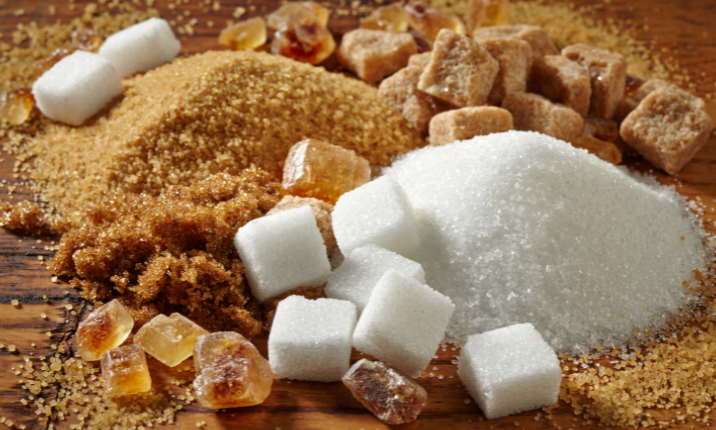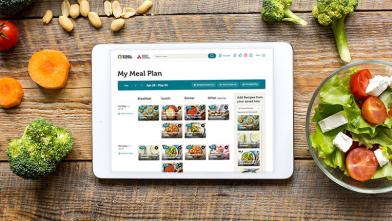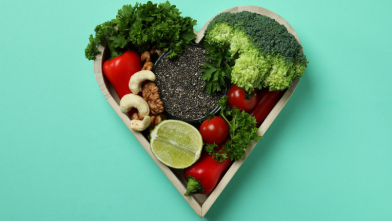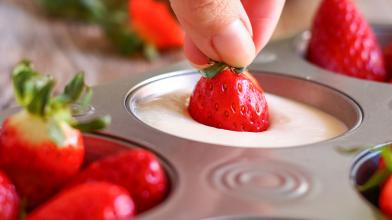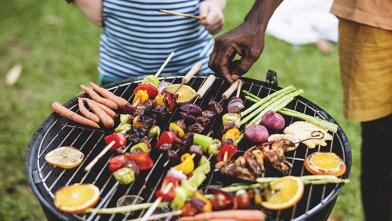Whether you have diabetes, prediabetes, or just want to be more mindful of how much sugar you eat, the evidence is clear: too many sugars may mean trouble for your health.
Here’s what the science says, why it matters, and some simple steps you can take to help get your calories under control.
Sugar and Your Health
A major scientific study recently reported that higher sugar intake is linked with 45 harmful health outcomes—and practically no benefits.
According to the results, higher sugar intake is associated with an increased risk of:
- 18 endocrine and metabolic outcomes, such as diabetes, weight gain, and obesity
- 10 heart and blood vessel conditions, including heart attack, stroke, and high blood pressure—and a higher overall risk of developing and dying from heart disease
- 7 different cancers, including breast, pancreatic, and prostate cancers—and a higher overall risk of developing and dying from cancer
- 10 other health conditions, such as asthma, ADHD, liver problems, and tooth decay
Sugar in the foods you eat adds calories and not much else. Sweets can also affect your eating behavior by making you feel less full. They can even increase your appetite, causing you to overeat.
How much is too much sugar?
The study recommends keeping your sugar intake below 25 grams (about 6 teaspoons) per day. And you should limit sugar-sweetened beverages, like soda, to less than one serving per week. A typical regular soda contains around 10 teaspoons of added sugar! The leading sources of added sugars in the U.S. are sugar-sweetened beverages, desserts, and sweet snacks.
Limiting sugar is important at any age, but it’s especially critical for young children. Eating too many sweets too early in life can lead your child to prefer sweet foods as they age and affect children’s bodies with lifelong impacts on health. The Dietary Guidelines for Americans state that children younger than two should not be fed any added sugars at all.
How to Cut Back on Sugar
Cutting your sugar intake is easier than you might think. Once you learn to recognize where the sugar in your diet is coming from, you can find healthier options that will still bring plenty of joy and variety to your tastebuds.
- Cut back the usual suspects: Cakes, cookies, candy, ice cream, soda—we all know every sweet treat comes with a big dose of added sugar. Save these for special occasions.
- Be mindful of sneaky sweets: Added sugars often lurk in places you wouldn’t expect. In fact, many items that are marketed as “healthy” are actually packed with sugar. Here are some common culprits:
| Sneaky Sweet | Try Instead… |
| Sports drinks, energy drinks, and flavored water beverages | Plain old water! You can easily make flavored water at home with fruit and herbs. Try this Watermelon Rosemary or Pineapple Mint that can be made with tap water or use unflavored sparkling water if you’re craving some bubbles. |
| Store-bought smoothies and juices | Making your own smoothies/juices so you know they’re made with nothing but fresh fruits/veggies and plain yogurt. Try this diabetes-friendly Smoothie Breakfast Bowl or a Fruit and Almond recipe. |
| Store-bought coffee drinks/lattes | Flavored syrups are made from sugar, so order drinks without syrups or toppings. Even better is make your own coffee at home and use zero-calorie sweetener or syrups. |
| Flavored yogurts | Plain non-fat yogurt with fresh or frozen fruit added, if you like. You could even make a Blueberry Lemon Yogurt Parfait! |
| Granola bars and cereal bars | Nuts, popcorn, or energy bars made with less sugar. If you want a quick grab-and-go option, try making these Pumpkin Apple Protein Bars. |
| Dried fruit, applesauce, and fruit cups | Fresh or frozen fruit is one of the best options as they contain fiber and you are less likely to overindulge. If purchasing fruit cups, be sure to purchase ones packed in water and not syrup. |
- Inspect labels on packaged and processed foods: A great way to cut sugar is to eat more foods that are less processed. Packaged foods often have added sugar and empty calories. Focus on eating more whole fruits and veggies, whole grains, and healthy proteins instead.
When you do eat packaged foods or visit a restaurant, check the nutrition facts. Here’s what to look for:
- Serving size. Knowing the serving size helps you make sense of the rest of the label. A single package may contain multiple servings. At a restaurant, a large soda cup typically holds two to three 12-ounce servings.
- Total and added sugars. Total sugars include sugars that occur naturally (like the sugars in milk and fruits) and those that have been added (like cane sugar, corn syrup, sucrose, dextrose, and many others). Try to select products that have less than or equal to 10% daily value on the Nutrition Facts label.
- Sugar substitutes. Many products marketed as “low-calorie” or that do not contain added sugar are made with sugar substitutes or artificial sweeteners instead. While these may offer the sweet taste you desire, be mindful you don’t eat or drink more that may offset the calorie savings.
